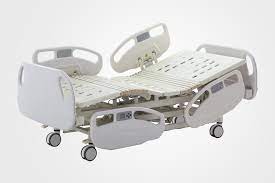Having a quality product from a Medical Equipment Supplier is important. You need to ensure that the device you purchase is not only safe but also affordable. There are many ways to do this, including looking for a good deal on your medical equipment, finding out the best prices in your area, and taking advantage of online resources.
Quality is the number one priority for medical equipment suppliers
Having a quality management system in place for Medical Equipment Suppliers is essential. This can help identify problems early, before they cause harm. It also can improve communication among supply chain members, and promote collaboration. It can also help reduce the cost of operations.
A comprehensive quality management system (QMS) should cover all aspects of a supplier’s operations. It should include testing product samples, quality control, and quality assurance.
It is important to have a quality system that is appropriate for the type of device being manufactured. Manufacturers need to apply applicable sections of QS regulation, and use good judgment when implementing the system.
It is also important to conduct a supplier audit to assess the capabilities of a supplier’s quality management system. This can help determine the communication processes for quality issues. It can also help to quantify the risk of a supplier.
Some medical equipment manufacturers may offer post-sale support. This can help ensure satisfaction from previous customers.
Requirements for DME suppliers
Whether you are looking for medical equipment suppliers or are already a supplier, it is important to know what your state requires. Each state has different rules, guidelines, and costs for forming a business. Knowing the requirements will help you choose the best entity to operate your medical supply business.
DME suppliers in New York are regulated by the NYS Department of Health’s Medicaid Program. They must be licensed and follow a strict set of guidelines to remain enrolled. There are also requirements to ensure the quality of their products.
The requirements for medical equipment suppliers vary depending on the type of product you are selling. For example, a durable medical equipment provider may need to have a resale permit. They must also register with the state in order to obtain a license.
If you are a medical equipment retailer, you must obtain a state license and sales and use tax permit. You must also obtain a resale permit and assumed name certificate.
Other resources
Choosing a medical equipment supplier is very important to a patient’s recovery. It is also critical to ensure that you work with a supplier that is a participating provider with your insurance company. You should also be sure to look for a supplier with staff who can submit claims to your insurer for you. Many insurers require prior authorization for both purchases and rentals. It is also a good idea to check with your local community for organizations that may provide new equipment for free.
Generally, most types of medical equipment are covered by Medicaid, Medicare, and insurance companies. There are several resources available for people with low incomes and underinsured, including the Supplemental Security Income program. These programs, which are available through the Social Security Administration, are designed to provide basic needs assistance.
The Global Hospital Furniture Market
Having the proper medical furniture in the hospital helps provide a clean and comfortable working environment. It also provides storage space for patients’ belongings. The furnishings should be durable, safe and easy to clean.
The growing demand for healthcare services is expected to drive the growth of the market. However, the increase in medical furniture prices may hamper the market’s growth. The industry is expected to reach USD 16,190 million by 2030.
Moreover, the Asia Pacific is projected to grow at the highest CAGR during the forecast period. This region is expected to witness a large number of cancer and cardiovascular disease patients. These patients, along with an increasing number of chronic diseases, are expected to boost the demand for hospital furniture.
Several countries in Asia have a well-developed healthcare infrastructure. These countries are also technologically ahead of the curve.
The aging population in Europe is linked to a decrease in family support for long-term caregiving. In addition, the costs associated with the official long-term caregiving services are high. These factors are contributing to the global vulnerability of hospitals exposed to COVID-19.
In the healthcare design sector, infection prevention is a primary focus. Antimicrobial surfaces are key to minimizing the risk of critters spreading germs. In addition, the use of warm colors and earthy tones can help to calm uneasy nerves.
The Hospital Furniture market is also expected to benefit from societal developments. In fact, increased governmental funding for healthcare facilities in developing countries is expected to boost the market.



